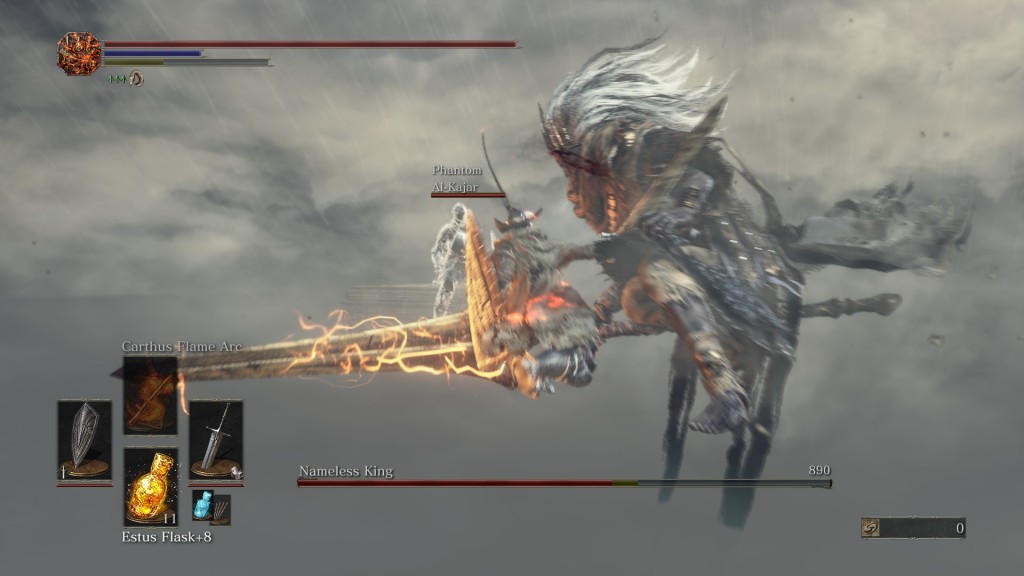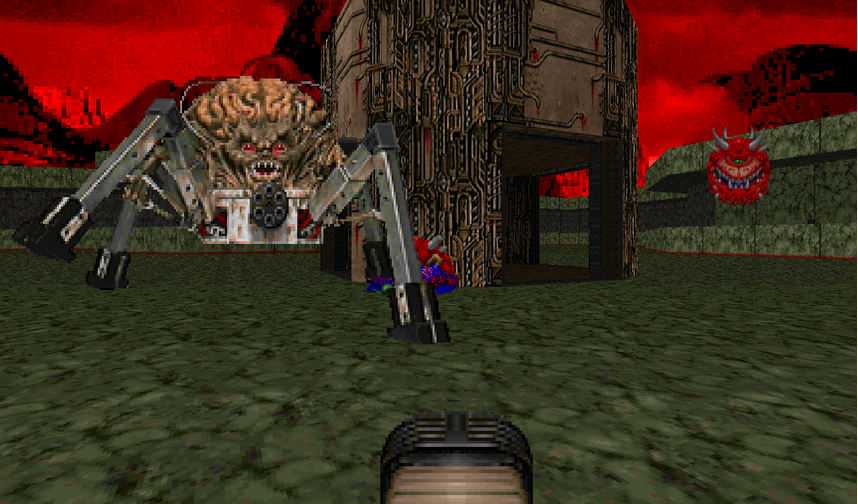I love both Doom 2016 and Doom Eternal as games that refined FPS design and moved it forward respectively. When I think about other shooters, and even just action games in general, id Software managed to create one of my favorite philosophies, and without realizing it at the time, cured me of my hoarder syndrome.
Item Hoarder
When we talk about hoarding in videogames it is the tendency for players to hold onto items no matter their usefulness or utility. This is typically seen in RPGs with any kind of powerful item or limited time use consumables. The idea that something could be of use at some point. Players will forgo using items that will help them in the moment, because there could be an even bigger moment down the line.
Many action games that use items will reward the hoarding behavior. This could be done by limiting them on purpose and forcing players to backtrack for spares, or lowering the player’s ranking each time they use a healing item.
A long time ago I wrote a post about hoarding in videogames and why it is considered poor design to encourage or reward this behavior. In my opinion, it is better to keep the player focusing on the “now” than 10+ hours down the line. Oftentimes, that future focus tends to backfire if the moment-to-moment gameplay is not enjoyable: making players quit long before the game gets better. Even though RPG games would encourage hoarding, action-based games seemed to thrive on depriving the player.
Empty Pockets:
Any action game that has had resource management (either health, ammo, or both) has always had a problem with hoarding items. Traditionally, the only way to recover resources was to find pickups around the map, which meant that there was a limited number of options for the player to recover. Part of the problems with action (and FPS) design is that since their inceptions, the ability to recover resources was kept away from the core gameplay loop. It was considered an imbalance of the design to allow for easy recovery. The consequence of this meant that players were actively punished for future fights if they didn’t do well in a previous one. Starting a new arena or encounter at half health and no ammo was a death sentence.
This also fed into a common issue from shooter/shmup games and how they actively punished lesser skilled players. If someone wasn’t good at these games, they would use more ammo, or die and lose their weapon, making it harder to kill enemies which in turn increased the difficulty. Expert players didn’t mind it, because they were not bothered by it. Many shmups played at the expert level was all about avoiding death and maintaining your strongest weapons. This led into a common issue in videogames that made the game harder for people who weren’t as skilled at it.
The first move towards this design came with one of the often-joked mechanics: passive health regeneration. That every action hero could just hide behind a wall and magically recover from gunshots, burns, and so on. While this helped, it didn’t fix the problem of the player running out of their best ammo. Many third and first-person shooters always tempted the player to use powerful weapons early, and then throw in a strong enemy to crush them after the fact.
These aspects of limiting the player’s options would become the parts that id Software spent their time removing and balancing Doom 2016 (and Doom Eternal) without them.
Push Forward
In a GDC talk, members from id Software discussed designing Doom 2016 (and what would carry over to Doom Eternal) with, “Push Forward” design. The concept was to design the game around the idea that the player should always be engaging in the core gameplay loop IE: rip and tear. Every aspect of the game’s mechanics adhered to this philosophy — if something slowed down the player, kept them from being aggressive, or required them to retreat, it would be removed.
One of the more polarizing elements from the talk that had to be taken out was the simple act of reloading. Reloading a gun in an FPS is regarded like an essential element like breathing — you’re not supposed to take it out. And yet, with its exclusion, Doom became a smoother game as a result, and I couldn’t imagine playing it now with having to stop and reload.
Of course, the ultimate game mechanic about keeping the player engaged came from the glory kill system. By using glory kills — finishing moves on staggered enemies or with the chainsaw — the player could instantly recover health and ammo while in a fight. This one “simple” change radically altered the dynamic of playing the game. Keeping with the goal of the developers, players are not supposed to disengage with the enemies, even if they are hurt. When I played Doom Eternal, my health constantly went from 100 to 10 at a moment’s notice as I engaged enemies, got hurt, finished them with a glory kill, and kept on fighting.
In effect, it turned the player into their own health and ammo resupply, and again, integrated that into the core gameplay loop. By making this change and adopting a push forward philosophy, it opened Doom, Doom Eternal, and games as a whole, to a different kind of resource management.
Sustained Play
Going back to the first paragraph, many gamers hoard items and resources due to the necessity of the design. With Doom’s design, it created a dynamic where there was never a need to hoard resources — either abilities would regenerate over time, or the player can get it back very easily. In my review of Doom Eternal, I said that the game felt more like an action game, or a soulslike, than a traditional FPS, but now, I would go as far to say that it feels better than a soulslike in my opinion.
I have never been a fan of consumable items in videogames, as again, they lead to hoarding and making the game less enjoyable for the “now.” With both Dooms, the games never let off the challenge of fighting, but at the same time, they never punish the player for the future. I know if I end a fight with very little ammo, a resupply is only one chainsaw swipe away. This was one of the problems I had with Remnant from the Ashes, which was the previous game that I felt a shooter-focused soulslike could be applied to.

Sustained play allows someone to be able to focus on the now, while being able to recover important resources easily
The game ran into the same problems that other shooters and soulslikes had keeping the player always focused on the combat.
Guns didn’t have infinite ammo, and the only ways to get it back were to kill enemies with your other weapon or use a consumable ammo box. What ended up happening was that the game would constantly spawn enemies in to distract them, forcing the player to use ammo that they couldn’t afford to use, to then run over and grab it, and be in the same position as before. The estus flask design of the Dark Souls series handled the issue of keeping the player focused on the core gameplay loop (by always having a healing item), but put a hard limit on it (which could be upgraded).
By turning consumable options into a more controlled item, it allows the player to better sustain themselves during a play. There are still limits on the player’s resources, but it’s handled in a way that focuses on the task at hand as opposed to down the line.
Never Stopping
What Doom got right about push forward design was figuring out an elegant way to keep the player in control, have limitations or conditions, and never have to worry about entering a situation unprepared. I’m currently following the indie game Ultrakill that is looking to be the successor of Doom’s design — no reloading or ammo on weapons, super high-speed play, and the player gets health back by hurting enemies in close range.
In my opinion, this kind of philosophy should be looked at as an alternative for item hoarding or limiting the player’s options. There is a big difference between having a short-term limitation — the player can use X every 20 seconds — vs. a long term — the player can only have 3 copies of X and can’t replenish it normally. Too often, developers keep their designs focused on the long-term play and forget about the moment-to-moment gameplay. As I’ve said many times when talking about game design, the very best games tend to make every second engaging and push forward design facilitates that.
By removing the mental energy that had to be dedicated to resource management, it afforded the designers to refocus that on enemy engagement. Instead of playing Doom and thinking, “I can’t use my rockets, I have to save them for a large enemy,” the game turns into, “What is my answer to whatever is coming at me right now?”
As I said in my review of Doom Eternal, I don’t want to play a first-person shooter that is just about camping in a position, or turning off my brain — I want to play one that makes me think. It seems like we’re getting closer than I thought to creating a Dark Souls FPS with the use of push forward design, and I cannot wait for that day.
If you enjoyed my post, consider joining the Game-Wisdom discord channel open to everyone.


